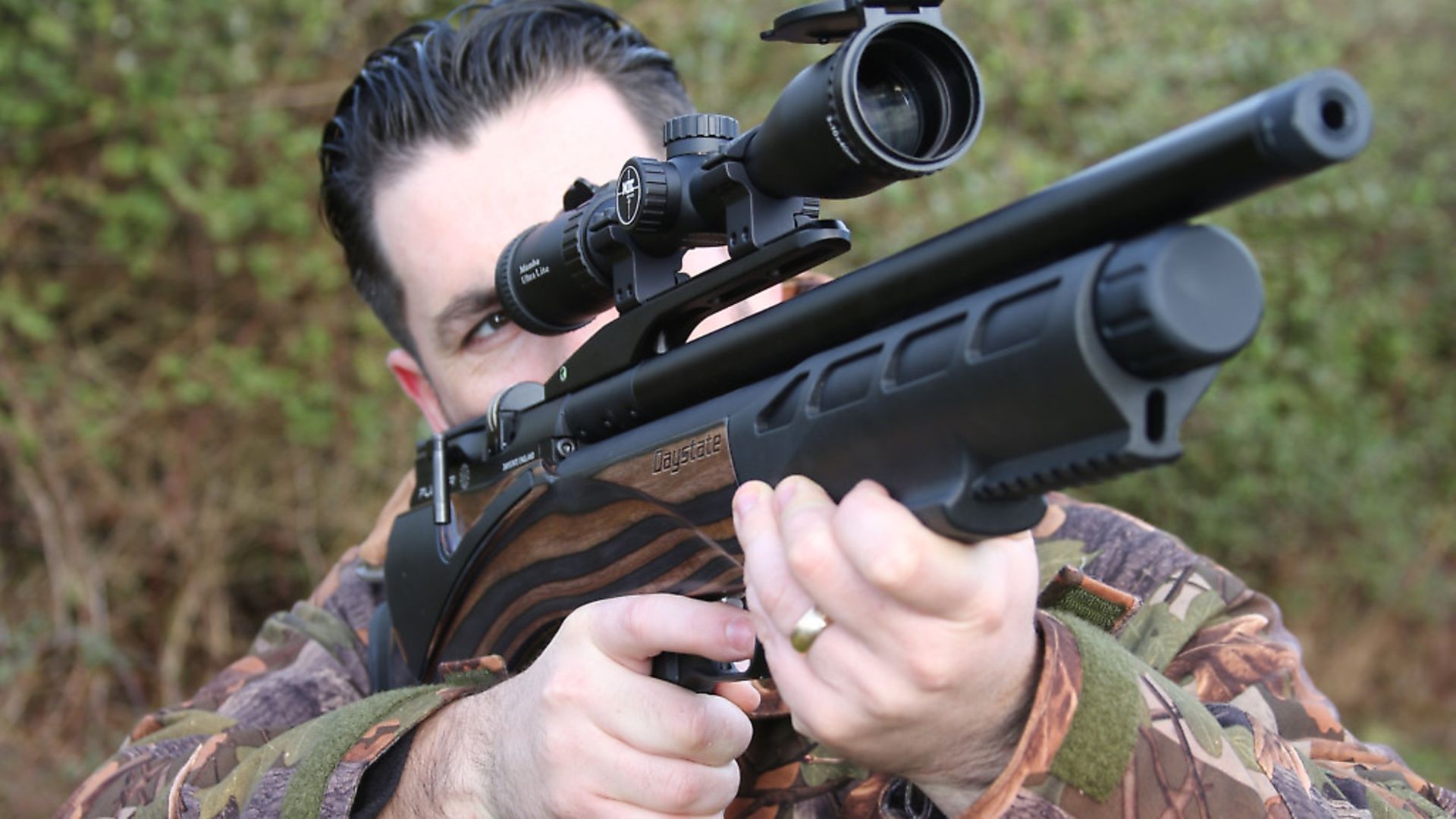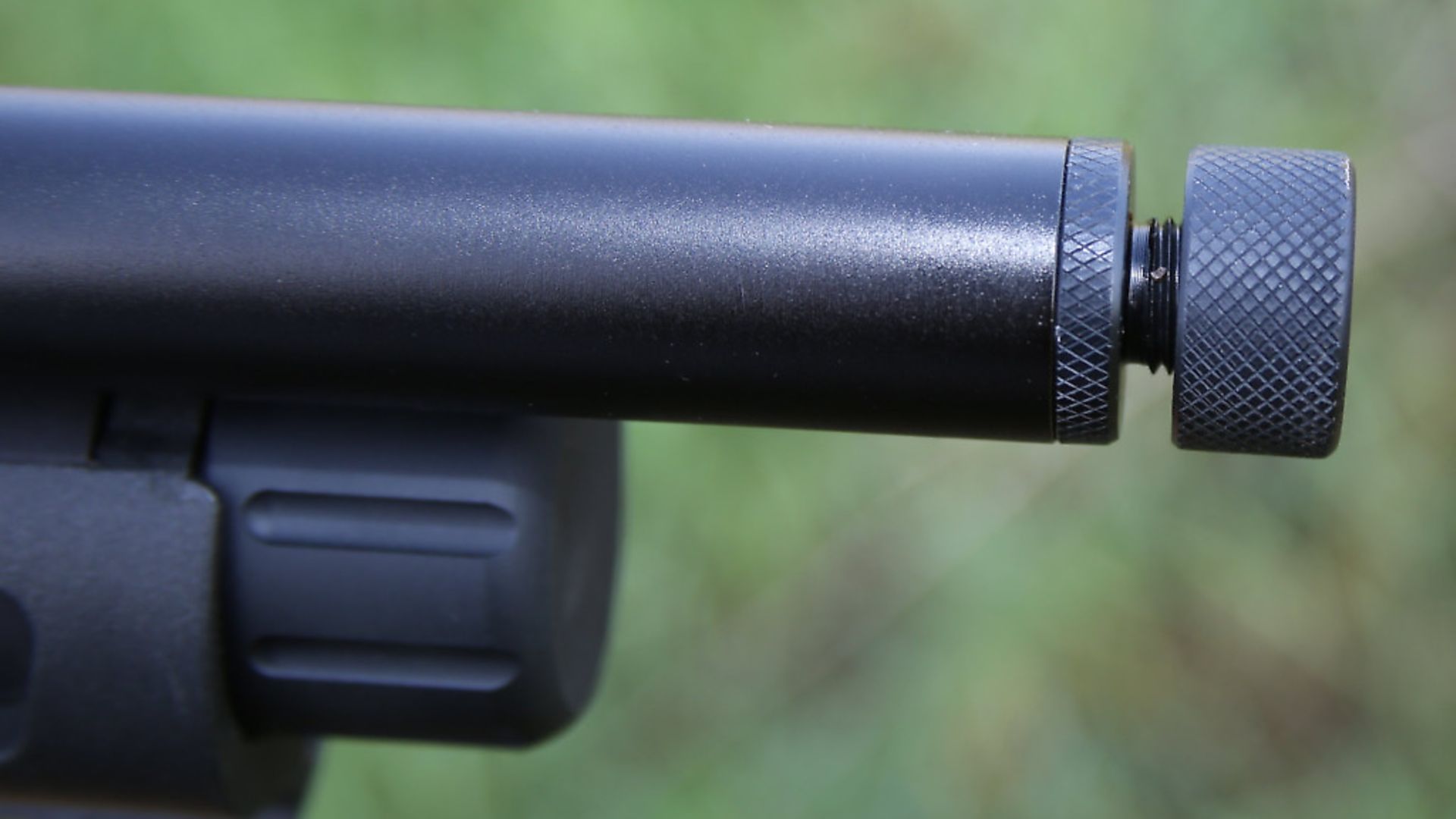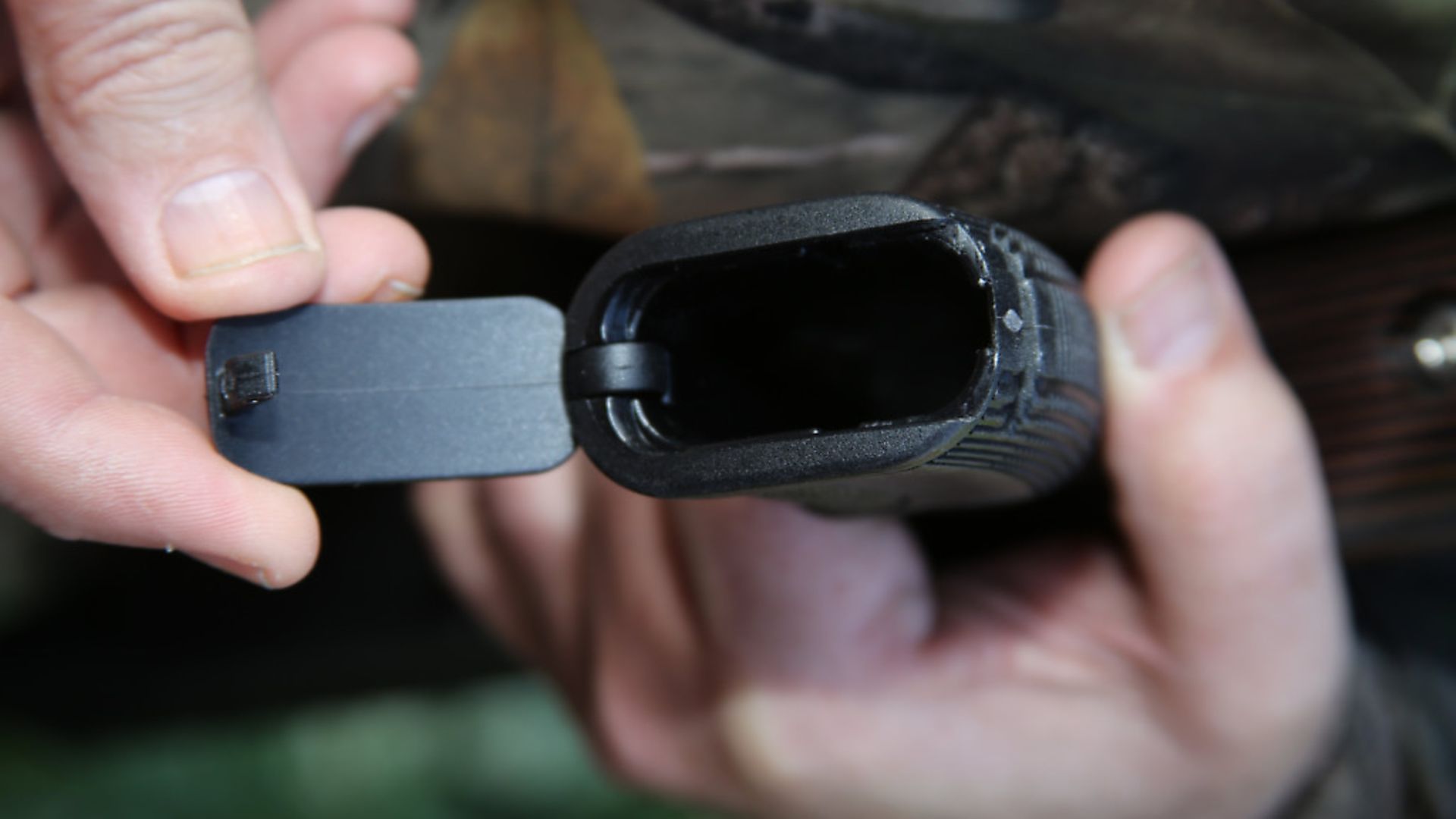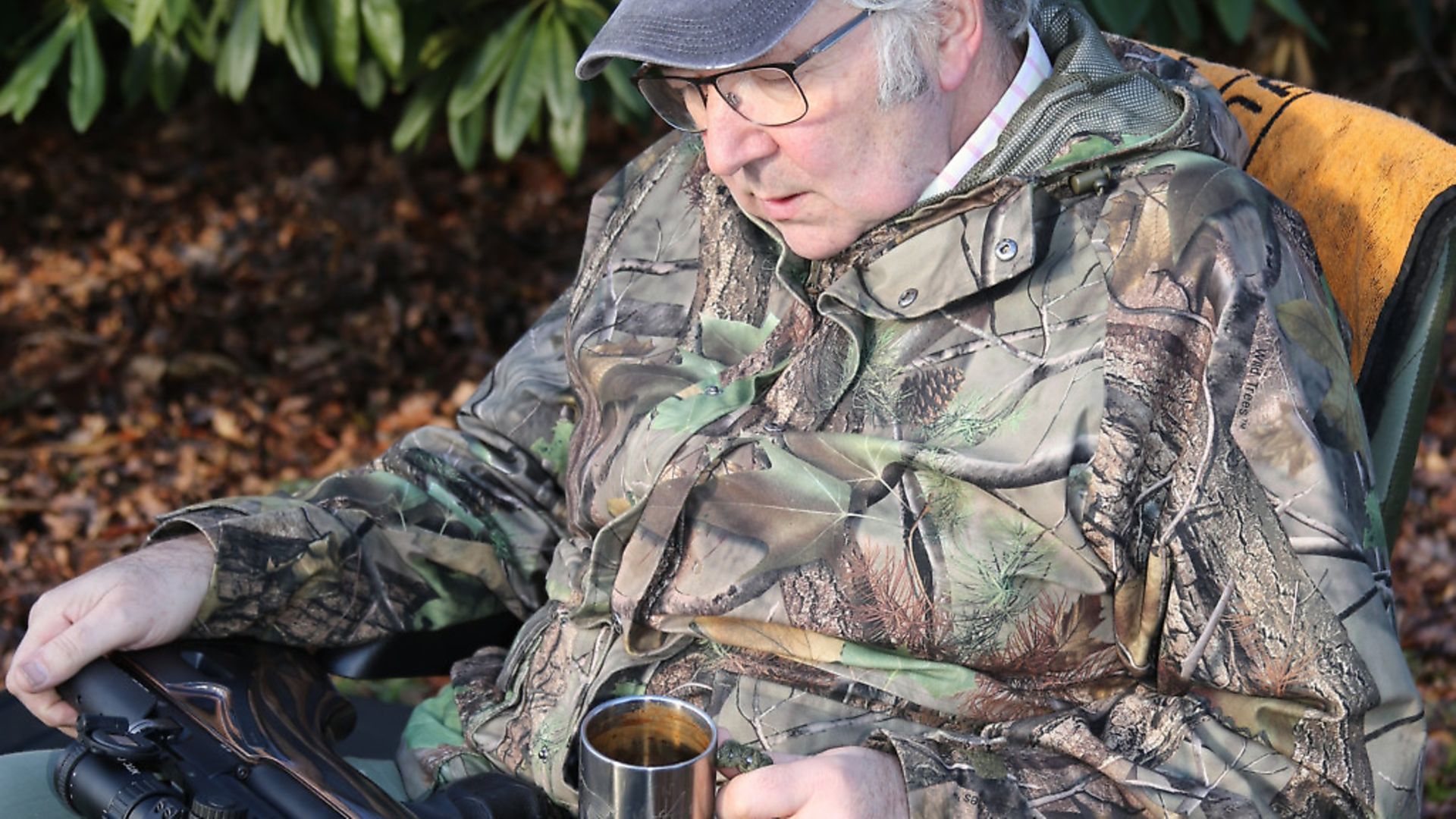Terry is thwarted by the conditions, but the Daystate Pulsar carries on regardless
 credit: Archant
credit: Archant
Read Terry Doe’s first test of the Daystate Pulsar here.
This follow-up test is a fine example of what happens when ‘the best-laid schemes o’ mice an’ men gang aft aglee’, as Robert Burns once insisted. My particular scheme was simple enough, but still ganged all sorts of aglee, when freezing fog shut down any notions of my going hunting with the Daystate Pulsar. Regular readers will recall that my mission was to see how the super-sophisticated Pulsar and its all-electronic organs stood up to the rigours of the real world. As promised in last month’s Editor’s Test, I took the Pulsar along on a fishing/hunting trip into the barren wastes of the Surrey hinterlands, then I chained it to a tree and allowed it to freeze all night, whilst I kipped comfortably nearby in my bivvy.
That part of the plan worked a treat, although there wasn’t the hoped-for half-inch of ice on the rifle when I woke about an hour before sunrise, and I began my day by propping the Pulsar against my bedchair and preparing myself for hunting action as soon as dawn broke and I could see what I was doing.
 credit: Archant
credit: Archant
No go zone
All I actually saw was fog. Freezing, dense and hunt-ruining fog. On this shoot, I always get here just before dawn, do a couple of circuits to take in all of the quarry hotspots, then leave before the dog walkers begin to trespass all over the place. Those walkers and their dogs are not legally allowed to be here, but it only takes a couple of them to wreck any chance of stalking a rabbit, so I work around it. I couldn’t do that this time, though, because by the time the fog cleared, my shoot would have more French bulldogs and other fashionable fidos on it than vermin.
 credit: Archant
credit: Archant
Adapt and overcome
I had another challenge, too, in that the test rifle had to be back to Daystate in time for the IWA show in Nuremberg, so the follow-up test had to be now or never. I went with ‘now’. First, I tested the Pulsar’s basic functions and they all checked out. The LCD panel in the rifle’s cheekpiece glowed reassuringly and its readout confirmed we were good to go. Next, I put five pellets over the chrono’ and the Pulsar’s previous energy output of 11.7 ft.lbs. was established from shot one. That got a nod of approval.
Truth to tell, in bare hands, the pre-chilled Pulsar was slightly uncomfortable to hold, but a pair of gloves, plus of course not freezing the rifle before shooting it, would have sorted that out a treat. To its credit, the features which came in contact with me – the grip, fore end and cheekpiece – warmed up within minutes and were noticeably warmer than the stock’s laminate frame. I’m putting this down as ‘a good thing’, and a practical advantage over all-timber stocks.
 credit: Archant
credit: Archant
Phase two
So far, my re-jigged practical evaluation had proved that a chilled-out Pulsar can hit the ground running at full speed from shot one, and that its handling won’t be unduly compromised in harsh winter conditions. This was a good start and I allowed myself a modicum of congratulations.
With my ungloved hands still humming from the cold, I went for a magazine loading test, which I thought would set me quite a challenge, and I’d been uncharacteristically efficient and brought along a .22 and .177 magazine, in case the smaller calibre would prove the undoing of the whole Pulsar system. It didn’t. The cut-outs in the Daystate magazine allow easy access for pellets and fingers alike, and the overall finger-friendliness of the magazine design takes care of the rest, whatever the weather.
Final phase
With the fog still stupidly dense, I was running out of options, so I concentrated on hammering random targets at all angles, until my mate Steve turned up and asked if he could take the Pulsar for a spin around his permission, which is almost next door and dogwalker-free. Steve is last month’s cover star, and not exactly a reluctant poser, if you get my drift, but the lad can certainly shoot and his appreciation of safe handling is a credit to him, so I handed over 2,160 quid’s worth of Pulsar and Mamba Ultra Lite scope, and started to pack down my gear.
Verdict
Is the Daystate Pulsar an entirely practical hunting tool? Yes it is. Would someone who’d paid a couple of grand for one do to it what I’d just done? I should certainly hope not, but it’s still good to know that prolonged exposure to the elements, and especially the cold, didn’t zap the Pulsar’s battery pack, or give it computer brain-freeze.
The Daystate Pulsar is a truly remarkable piece of shooting equipment. I can only echo what I said last time; this rifle will never be an elegant sporter, or even a fondly regarded ‘Old Betsy’, but if clinical, reliable and practical performance is what you’re after – switch on to a Daystate Pulsar.
Specification
Model: Pulsar
Manufacturer: Daystate
Country of origin: UK
Price: £1949.99 including hard case
Type: Pre-charged, multi-shot, bullpup sporter with fully electronic action
Calibre: .22, .177, .25, .30
Cocking/loading: Sidelever and supplied single-shot tray
Loading: Via removable, rotary 10-shot magazine
Trigger: 2-stage, adjustable, battery-powered, electronic, with manual, resettable safety
Stock type: Ambidextrous laminate – sidelever can be switched to either side – stock weight: 3.4kg (7.5lbs)
Length: 760mm (30ins)
Barrel: 430mm (17ins)
Fill pressure: Max 250 bar (designed pressure stated on each rifle)
Shots per charge: 250 in .22, 220 in .177 at sub-12 ft.lbs. configuration. Hi-power versions available.
Average energy: 11.7 ft.lbs.
Contact: Daystate on daystate.com
Tel: 01785 859122
RRP: £1949.00
Read Terry Doe’s first test of the Daystate Pulsar here.